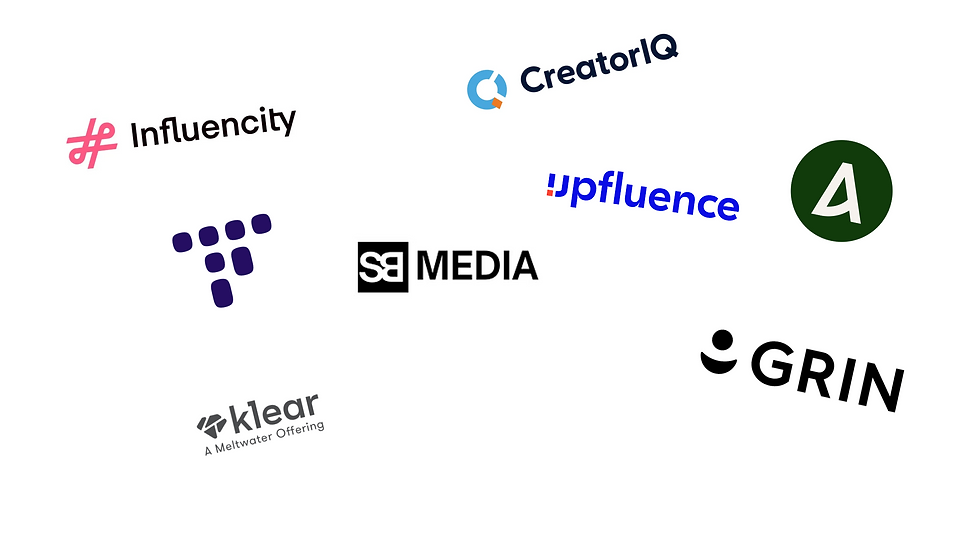The Ultimate Guide to Running a Successful Influencer Marketing Campaign
- Aditya Dewangan
- Apr 1
- 2 min read

Influencer marketing is a powerhouse for brands seeking authentic connections with their audience. However, success requires more than celebrity endorsements, it demands strategy, data, and adaptability. This guide breaks down how to execute a multi-platform influencer campaign that drives results.
Step 1: Define Clear Campaign Goals
Start by outlining objectives aligned with your brand’s needs:
Brand Awareness : Expand reach across platforms like Instagram, TikTok, and YouTube.
Lead Generation : Drive sign-ups or inquiries via influencer-driven calls-to-action.
Conversions & Sales : Use shoppable content to turn followers into customers.
Pro Tip : Tie goals to measurable KPIs (e.g., engagement rates, click-through rates) for clarity.
Step 2: Understand Your Target Audience
Research your audience’s demographics, interests, and platform preferences. Tools like Google Analytics or social insights reveal:
Which platforms they frequent (e.g., TikTok for Gen Z, LinkedIn for B2B).
Content formats they engage with (e.g., Reels, long-form videos).
Pro Tip : Leverage cross-channel marketing tools to unify audience data and refine targeting.
Step 3: Choose Influencers for Multi-Platform Impact
Select creators who align with your brand and audience:
Relevance : Ensure their niche matches your industry (e.g., fitness influencers for wellness brands).
Engagement : Prioritize micro-influencers (10k–100k followers) for higher interaction rates.
Platform Expertise : Partner with influencers who excel on your target channels (e.g., TikTok stars for viral trends).
Pro Tip : Use AI tools to vet influencers for authenticity and social media scalability .
Step 4: Craft a Cross-Channel Content Strategy
Collaborate with influencers to create content that resonates:
Format Variety : Mix Instagram Stories, YouTube tutorials, and TikTok challenges.
Brand Messaging : Provide clear guidelines while allowing creative freedom.
Call-to-Action (CTA) : Encourage followers to swipe up, shop now, or join a webinar.
Pro Tip : Let influencers showcase products organically, audiences trust genuine recommendations.
Step 5: Set Guidelines & Formalize Agreements
Protect your brand with clear contracts covering:
Content Approval : Review posts before they go live.
Usage Rights : Repurpose influencer content across your channels.
Payment Terms : Negotiate fees, commissions, or product gifting.
Pro Tip : Use platforms like SkyBox to automate contracts and track deliverables.
Step 6: Launch & Monitor with Cross-Channel Tools
Track performance in real time using cross-channel marketing tools :
Engagement Metrics : Likes, shares, and comments.
Traffic & Conversions : Use UTM links to measure website visits and sales.
Adjustments : Redirect budgets to top-performing influencers or platforms.
Pro Tip : Tools like Hootsuite or Sprout Social simplify multi-platform influencer campaign tracking.
Step 7: Analyze & Optimize for Future Campaigns
Post-campaign, evaluate what worked and what didn’t:
ROI Calculation : Compare costs to revenue generated.
A/B Testing : Experiment with influencer tiers (micro vs. macro) or platforms.
Scalability : Identify strategies that can be amplified for larger audiences.
Pro Tip : Use AI-driven analytics to predict trends and refine future campaigns.
Conclusion
A well-executed influencer campaign boosts awareness, engagement, and sales. By leveraging multi-platform influencer campaigns, cross-channel marketing tools, and strategies for social media scalability, brands can maximize ROI and build lasting audience connections.
Ready to Elevate Your Strategy?
Explore AI-powered platforms like SkyBox to streamline influencer collaborations and drive measurable results.





Comments